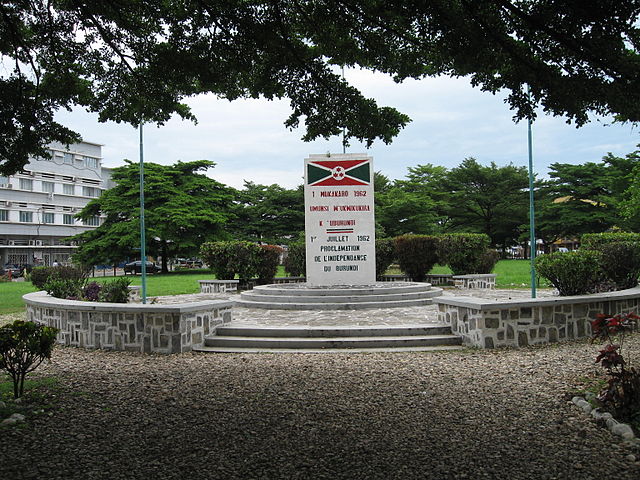Mwambutsa IV Bangiricenge was the penultimate king of Burundi who ruled between 1915 and 1966. He succeeded to the throne on the death of his father Mutaga IV Mbikije. Born while Burundi was under German colonial rule, Mwambutsa's reign mostly coincided with Belgian colonial rule (1916–62). The Belgians retained the monarchs of both Rwanda and Burundi under the policy of indirect rule.
Mwambutsa on a visit to Israel in 1962
Mwambutsa IV and David Ben-Gurion in 1962
Grave of Mwambutsa IV
Ruanda-Urundi, later Rwanda-Burundi, was a colonial territory, once part of German East Africa, that was occupied by troops from the Belgian Congo during the East African campaign in World War I and was administered by Belgium under military occupation from 1916 to 1922. It was subsequently awarded to Belgium as a Class-B Mandate under the League of Nations in 1922 and became a Trust Territory of the United Nations in the aftermath of World War II and the dissolution of the League. In 1962 Ruanda-Urundi became the two independent states of Rwanda and Burundi.
A Belgian Congo stamp overprinted for the Belgian Occupied East African Territories in 1916
The Cathedral of Our Lady of Wisdom at Butare (formally Astrida) in Ruanda. Catholicism expanded rapidly under the Belgian mandate.
Ruandan labour migrants at the Kisanga copper mine in Katanga (Belgian Congo) in c. 1930
Monument in Bujumbura commemorating Burundi's independence on 1 July 1962







